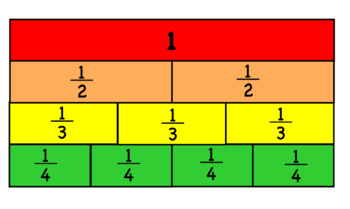SMART Notebook Fraction Bar Chart
- NOTEBOOK (SMARTboard) File
Description
Here I have created an interactive fraction bar chart for SMART Notebook. I frequently use it during direct instruction when teaching fractions and specifically equivalent fractions. I also often direct students to use it as part of their guided math centers to help them work. Students always seem to benefit from concrete representations of fractions the most and this is one of the many visuals I like to utilize.
The fractions included are one whole, halves, thirds, fourths, fifths, sixths, eighths, tenths and twelfths.
All the fractions are able to be manipulated and have their values locked onto them via the grouping function, which (knocks on wood) should generally be student proof. I do recommend using the reset button on the file after students use it, however.




